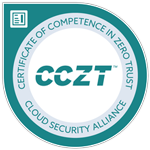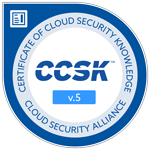
The Concept of EDI
In the world of modern business, it’s essential to streamline operations and enhance connectivity between trading partners.
This is where Electronic Data Interchange (EDI) comes into play.
The concept of EDI refers to the electronic exchange of business information between different organizations in a standardized format. By eliminating manual processes, EDI enables seamless communication, faster transactions, and improved efficiency.
History of EDI
EDI has a rich history that dates back to the 1960s when businesses started exploring ways to automate the exchange of information.
Initially, EDI was limited to large corporations and government agencies due to the high costs and complexity involved.
However, with advancements in technology and the introduction of standardized protocols, EDI became more accessible to smaller businesses.
The introduction of Value-Added Networks (VANs) in the 1980s further facilitated the adoption of EDI by providing a secure and reliable infrastructure for data transmission.
This paved the way for widespread implementation of EDI across various industries, revolutionizing the way businesses communicate and collaborate.
How EDI Works
At its core, EDI involves the exchange of structured electronic documents between trading partners. These documents can include purchase orders, invoices, shipping notices, and more.
EDI uses a standardized format, such as ANSI X12 or EDIFACT, to ensure compatibility between different systems.
The process begins with the sender’s system creating an EDI document, which is then transmitted to the recipient’s system through a VAN or a direct connection.
The recipient’s system receives the document, parses it, and extracts the relevant information for further processing. This automated exchange eliminates the need for manual data entry, reducing errors and saving time.
Benefits of Using EDI
The adoption of EDI offers numerous benefits to businesses of all sizes. Firstly, it improves efficiency by eliminating manual processes and reducing the time required for data exchange.
This, in turn, leads to faster order processing, reduced lead times, and improved customer satisfaction.
EDI also enhances accuracy by minimizing the chances of human error. With automated data entry and validation, the likelihood of data discrepancies or misinterpretation is significantly reduced.
This ensures that businesses can rely on accurate and up-to-date information for their operations.
Moreover, EDI promotes cost savings by reducing paper usage, postage fees, and the need for manual labour.
By eliminating the need for printing, faxing, and mailing documents, businesses can significantly reduce their operational costs while minimizing their environmental impact.
Common EDI Standards and Protocols
To ensure seamless communication between trading partners, EDI relies on standardized formats and protocols. The two most widely used standards are ANSI X12 and EDIFACT.
ANSI X12 is predominantly used in North America and is recognized by various industries, including retail, manufacturing, and healthcare.
It provides a structured framework for data exchange, allowing businesses to effectively communicate and collaborate.
On the other hand, EDIFACT is a global standard used primarily in Europe and other regions.
It provides a comprehensive set of messages and data elements designed to cater to the specific needs of different industries.
In addition to these standards, there are specific protocols for transmitting EDI data, such as AS2 (Applicability Statement 2) and AS4 (Applicability Statement 4).
These protocols ensure secure and reliable transmission of EDI documents over the internet.
Implementing EDI in Business Operations
Implementing EDI requires careful planning and coordination between trading partners.
The first step is to assess the organization’s needs and identify the key business processes that can benefit from EDI integration. These processes can include order management, inventory control, and invoicing.
Once the processes are identified, businesses need to select an EDI solution that aligns with their requirements.
This can involve choosing an EDI software provider or outsourcing the EDI operations to a managed service provider.
The next step is to establish connectivity with trading partners. This can be done through VANs, direct connections, or through the use of internet-based protocols like AS2 or AS4. It is crucial to establish clear communication channels and define the data formats and protocols to ensure seamless integration.
Finally, businesses need to test and validate the EDI implementation to ensure that the system is working as intended.
This involves conducting end-to-end testing with trading partners and resolving any issues that may arise. Continuous monitoring and maintenance are also essential to ensure the smooth functioning of the EDI system.
Challenges and Limitations of EDI
While EDI offers numerous benefits, it also comes with its own set of challenges and limitations. One of the main challenges is the initial investment required for implementing an EDI system.
This can include the cost of software, hardware, and the training of staff. However, the long-term cost savings and efficiency gains often outweigh the initial investment.
Another challenge is the complexity of EDI integration, especially when dealing with multiple trading partners. Each partner may have their own specific requirements and formats, which can lead to complexities in mapping and data transformation.
EDI also requires a certain level of technical expertise to set up and maintain. This can be a barrier for smaller businesses that may not have the resources or expertise to implement and manage an EDI system.
However, with the availability of managed service providers, even small businesses can benefit from EDI without the need for extensive technical knowledge.
Future Trends in EDI
As technology continues to evolve, so does the concept of EDI. One of the emerging trends in EDI is the integration with cloud-based solutions.
Cloud-based EDI offers scalability, flexibility, and ease of implementation, making it an attractive option for businesses of all sizes.
Another trend is the integration of EDI with other technologies, such as Artificial Intelligence (AI) and Internet of Things (IoT).
This integration allows businesses to leverage the power of data analytics and automation, further enhancing the efficiency and effectiveness of their operations.
Furthermore, there is a growing emphasis on data security and compliance in EDI.
With the increasing threat of cyberattacks and data breaches, businesses are taking proactive measures to ensure the secure transmission and storage of sensitive information.
Case Studies of Successful EDI Implementation
Numerous businesses across various industries have successfully implemented EDI and reaped the benefits.
For example, in the retail industry, large retailers like Walmart and Target have implemented EDI to streamline their supply chain processes.
This has allowed them to reduce lead times, improve inventory management, and enhance collaboration with suppliers.
In the healthcare industry, EDI has played a crucial role in improving the efficiency of claims processing and medical billing.
By automating the exchange of information between healthcare providers, insurance companies, and government agencies, EDI has reduced the time and effort required for claims processing, leading to faster reimbursements and improved cash flow.
Conclusion: The Future of EDI in a Digital World
EDI has come a long way since its inception and continues to play a vital role in modern business operations.
With the increasing reliance on technology and the need for seamless connectivity, EDI offers a reliable and efficient method for exchanging business information.
As businesses continue to explore ways to enhance their operations, EDI will undoubtedly play a significant role in the digital transformation journey.
Whether it’s automating supply chain processes, improving collaboration, or ensuring compliance, EDI provides the foundation for a connected and efficient business ecosystem.
In conclusion, the concept of EDI has revolutionized the way businesses operate and communicate.
Its benefits extend beyond cost savings and efficiency gains, impacting various aspects of business operations. As technology advances and new trends emerge, EDI will continue to evolve, helping businesses thrive in a digital world.







